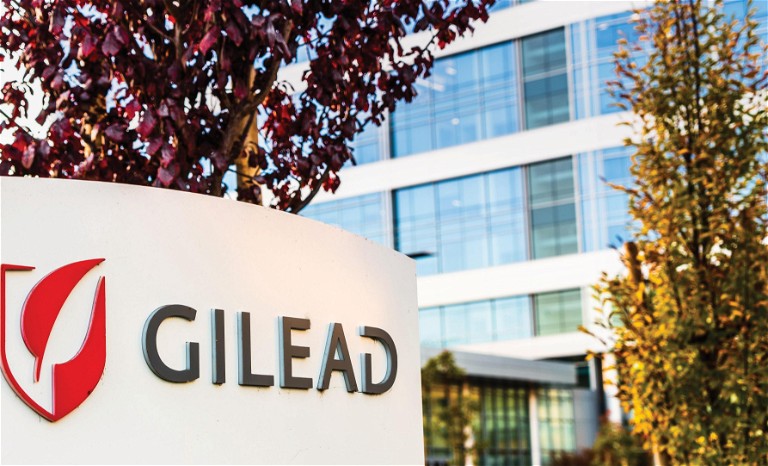Insider Interview
The landscape of blood cancer treatments in the UK
Pharmafocus speaks to Gilead Sciences about the current treatments available for blood cancers and how they are likely to develop in the future
Pharmafocus: Prior to CAR T-cell therapy, what was the standard of care for patients with blood cancer and what are the key issues associated with these treatments?
Gilead Sciences (GS): In blood cancers where CAR T-cell therapy is licensed, the standard of care for patients that have failed previous treatments formerly relied on non-specific treatments, such as chemotherapy and stem cell transplantation. While these treatments helped to improve survival rates, in aggressive forms of blood cancer, such as diffuse large B-cell lymphoma (DLBCL), the five-year survival rate remained at 60% in 2016.1
Novel treatments were needed to improve overall survival, but also to improve quality of life. For example, many patients experience intolerable side effects preparing for a stem-cell transplant, and of those who are eligible to receive a transplant, the risk of relapse is ever present. Of those living with DLBCL who receive a transplant, about 50% will eventually relapse, which can lead to a poor prognosis.2,3
The advent of CAR T-cell therapy aims to address some of these limitations by offering a more targeted approach to treating certain types of blood cancers.
Pharmafocus: How does CAR T-cell therapy fit into the blood cancer treatment landscape and what impact have we seen over the last five years?
GS: Over the last five years, CAR T-cell therapy has emerged as a welcome addition to the blood cancer treatment landscape, offering a novel and targeted approach.
In 2018, we saw access to the first therapies in DLBCL and paediatric (<25 years) acute lymphocytic leukaemia (ALL) being used for patients who had exhausted other lines of therapy and had very few options left. Five years later, in DLBCL for example, patients who previously had a prognosis of months are still alive in the UK.4
Since the first reimbursement decisions in 2019, the use of CAR T-cell therapy has expanded into another type of lymphoma and has now broadened its use in both ALL and DLBCL so that more patients can benefit.
Pharmafocus: what are the main obstacles to effective treatment for blood cancers?
GS: Several obstacles hinder effective treatment for blood cancers, including late diagnosis and access to innovative therapies, presenting challenges for patients, healthcare providers and researchers.

“ Quick diagnosis and access to cancer services are crucial for identifying and initiating appropriate therapies, leading to better outcomes for blood cancer patients ”
Prolonged waiting times for NHS cancer services, highlighted by Cancer Research UK’s recent manifesto, pose a real challenge to delivering effective treatment for blood cancer in the UK.5 Quick diagnosis and access to cancer services are crucial for identifying and initiating appropriate therapies, leading to better outcomes for blood cancer patients. Immediate action is needed to address these capacity issues for the full potential of existing therapies to be realised. Addressing inequalities in access to cancer services is also crucial to ensure optimal outcomes for blood cancer patients in the UK. In the most deprived areas of England, we see an 8% lower five-year survival rate for DLBCL patients, compared to those in the least deprived areas (63.3% survival vs 55.7%).6 Various pharma companies are addressing these disparities head-on, for example through grants programmes, which provide support to projects that are working to tackle inequalities in cancer care and improve the experiences of people from marginalised communities across the UK and Ireland.
Addressing these obstacles requires a multifaceted approach involving advancements in research, healthcare infrastructure, access to innovative therapies, and improvements in early detection and monitoring strategies. Ongoing efforts are crucial to overcoming these challenges and enhancing the overall effectiveness of blood cancer treatments.
Pharmafocus: How do you think treatments in this area will develop in the next five years?
GS: While it is crucial to advance the science and innovation for blood cancer patients in the next five years, it is equally essential to concurrently address the existing gaps in the healthcare system that can impact early access to relevant treatments. To meet the increasing demand for CAR T-cell therapies, some pharma companies have continued to expand their manufacturing network capacity, ensuring scheduling availability to meet the needs of physicians and to ensure patients do not wait as long.
In the longer term, companies should commit to working alongside the government, NHS England, industry and charities to adopt a national, strategic approach that tackles access barriers and expedites treatment uptake. Additionally, close collaboration with oncologists, haematologists and patient advocacy communities that is dedicated to shaping and executing clinical development and working towards equity in blood cancer care is just as important.
References
- Visit: cancerresearchuk.org/aboutcancer/non-hodgkin-lymphoma/survival#:~:text=Generally%20for%20 people%20with%20DLBCL,or%20more%20 after%20their%20diagnosis
- Visit: doi.org/10.1182/blood-2017-03-769620
- Visit: doi.org/10.1111/bjh.14136
- Visit: doi.org/10.1182/blood.2022018893
- Visit: cancerresearchuk.org/sites/default/files/cruk_manifesto.pdf
- Visit: ons.gov.uk/peoplepopulationandcommunity/healthandsocialcare/conditionsanddiseases/bulletins/cancersurvivalinengland/